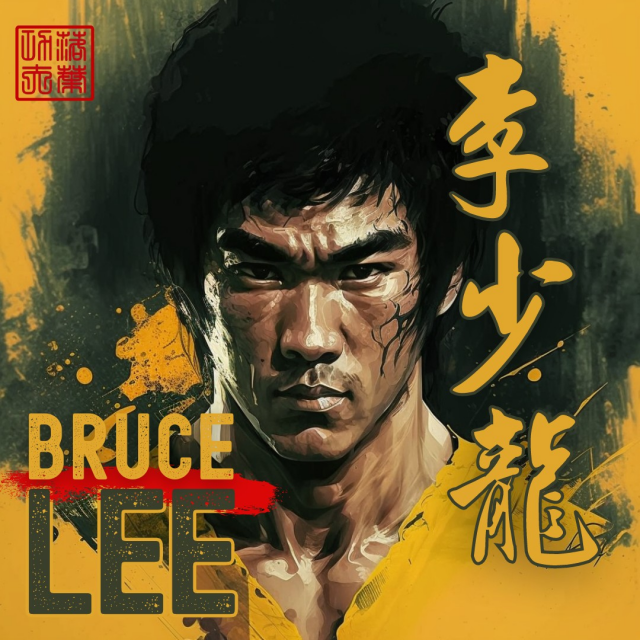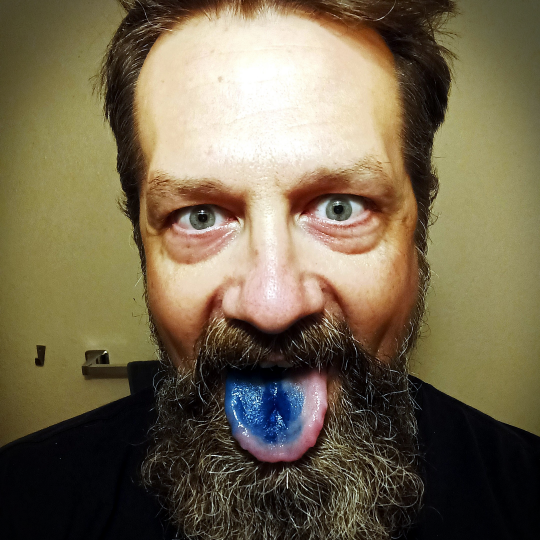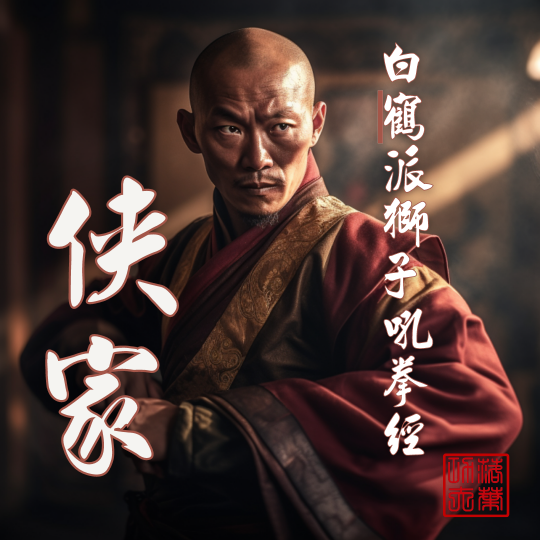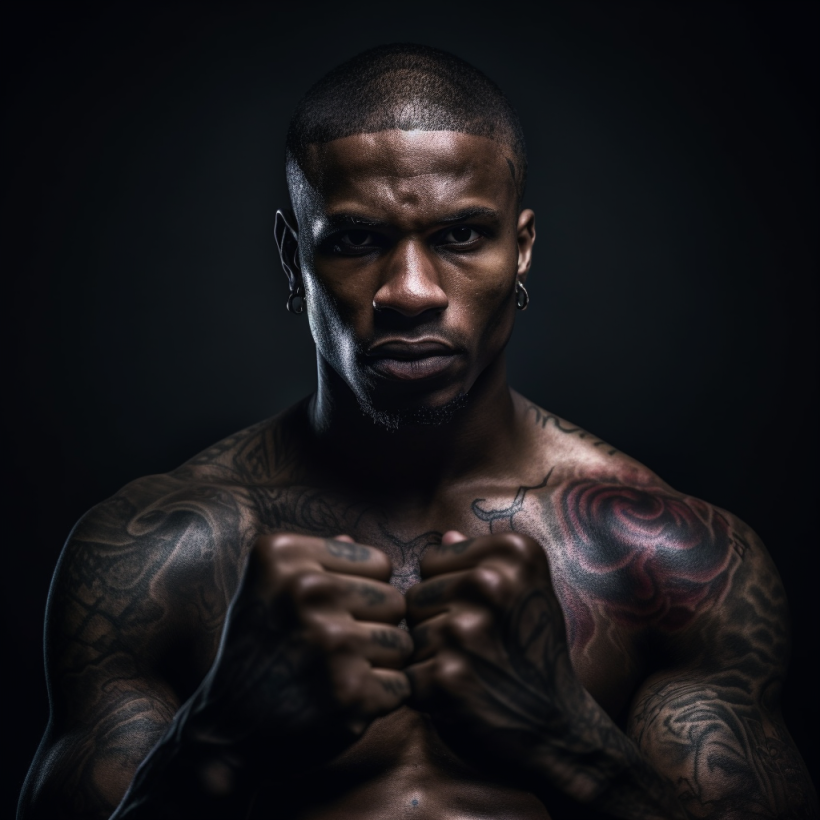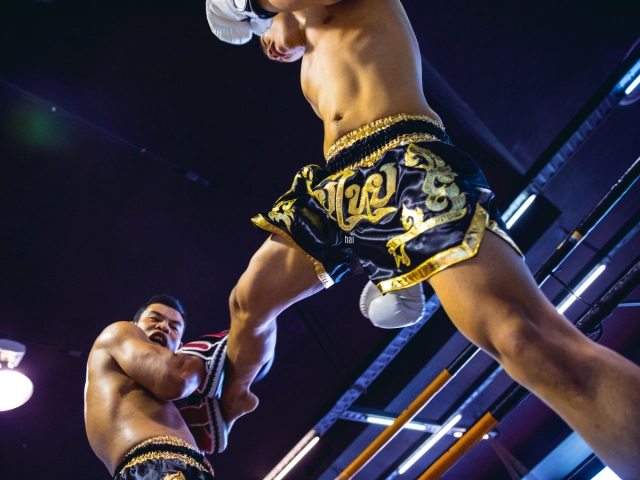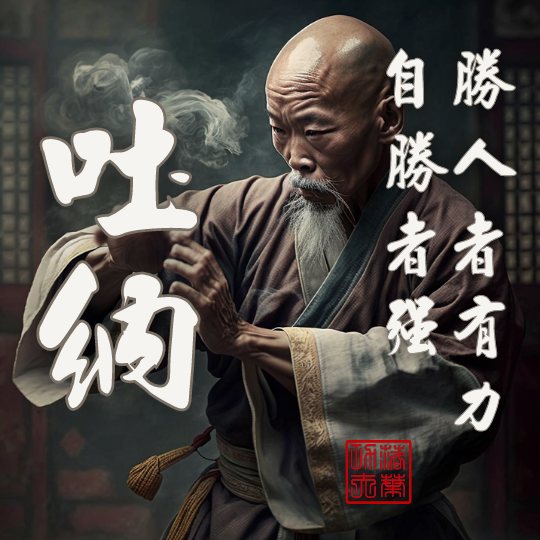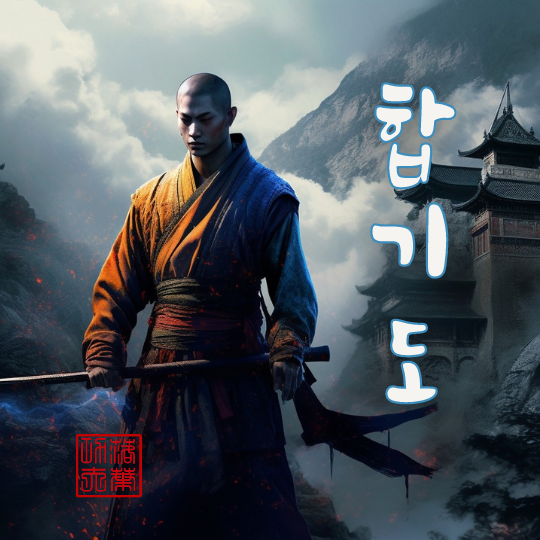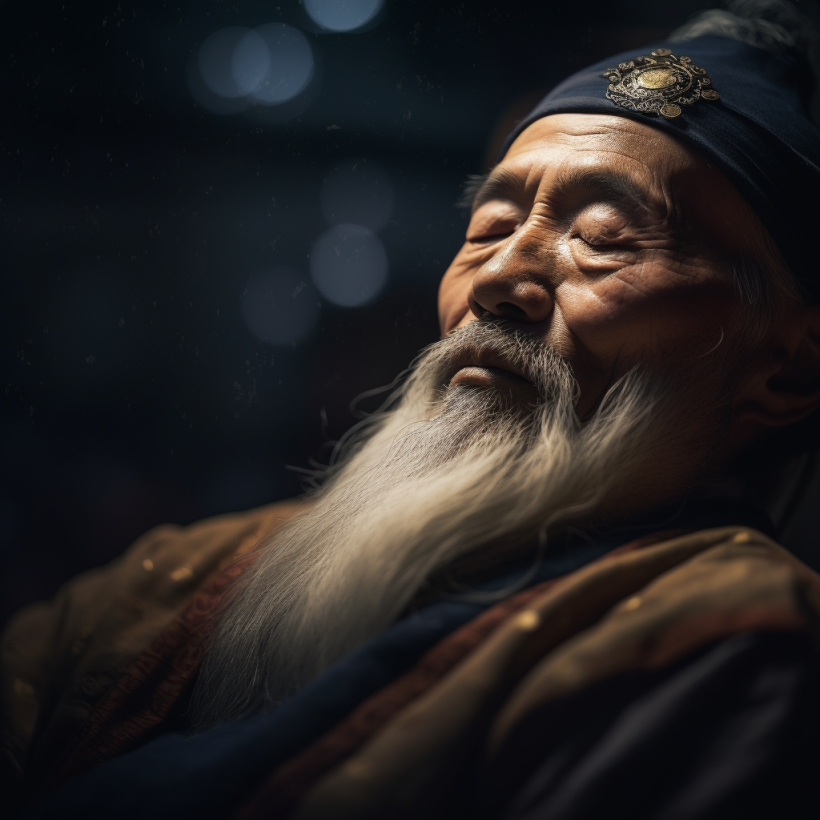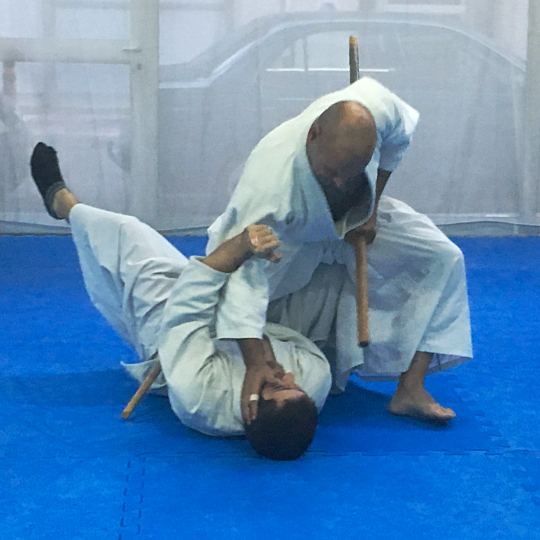
Introduction
Join me on a remarkable journey through the enchanting martial arts career of Ellis Amdur. From his humble beginnings with backyard karate to mastering multiple styles of Koryū, Amdur’s personal and professional life has been shaped by his deep fascination with martial arts.
His experiences across multiple disciplines offer unique insights into both the esoteric and practical realms of martial arts. Dive into the world of Koryū and discover its relevance to real-world scenarios through Ellis Amdur’s captivating narrative.
Ellis Amdur
Ellis’s journey began like many others, born out of defeat. As he puts it, he was “like a lot of people [who] lost a fight and started with backyard karate.” This initial brush with martial arts sparked a fascination that would shape the future course of his life.
His first brush with Kung Fu was when he found himself training with an offshoot of Alan Lee, a pioneering instructor of Chinese martial arts on the east coast who opened the discipline to non-Chinese individuals.

However, his journey was just beginning. Ellis was drawn to an Aikido dojo, stating that he “really got interested in Japanese martial arts.” He appreciated their “clean lines” and became “really fascinated with Aikido.” At one point, Ellis found himself living in the famous Bond Street dojo in New York after college and eventually relocated to Japan to continue his training. Ellis found Aikido “fascinating” due to its “intersection of modernity and tradition” and the culture of a “hodgepodge of sort of Neo-Shinto spiritual mania.”
In 1976, his path led him to Araki-ryū 荒木流, a Koryū. The term “koryū” (古流) describes traditional Japanese martial arts established before the Meiji Restoration in 1867.
– 古 (Ko), which means “old” or “ancient.”
– 流 (Ryu), which means “school” or “style.”
Thus, “Koryū” is translated to “ancient school” or “old style,” referring to the classical martial arts of Japan.
Araki-ryū was intriguing for its no-nonsense, close-quarter fighting: a blend of weapons and hand-to-hand combat. Ellis remarked, “To put it one way… it kind of taps into a feral mindset. It’s very violent. It’s violent in its mindset and very practical with its techniques.”
Amdur described his Araki-ryū teacher as an enigmatic and difficult man who, as a result, only had a few students. However, he immediately recognized Ellis’s unique character; his teacher once told him: “When we met, I looked in your eyes, and I saw you are a strange American. And I’m a strange Japanese, so I thought having you around might be interesting.”
Two years later, he started learning Tenshin-Bukō-ryū 天真武甲流兵法 with his (then) wife, under a 60-year-old Japanese woman named Nitta Suzuyo. He found transitioning from the violent Araki-ryū to the more formal Tenshin-ryū challenging but rewarding.
His thirst for knowledge didn’t stop there. He expanded his horizons, cross-training in Judo, Chinese martial arts like Xingyiquan and Tongbeiquan, and even Muay Thai. Upon returning to the States, his main interests became internal strength training and Arrestling, a mixed martial art designed specifically for police interactions by Don Gulla.
Grappling For Law Enforcement
In my conversation with Ellis, I was deeply intrigued by his perspective on law enforcement training. He shed light on a critical aspect – the necessity of specific martial arts techniques tailored for real-world scenarios encountered by police officers. As he elaborated, it’s not about merely fending off someone trying to grab your firearm or dealing with a close-range knife threat. It’s about abiding by “certain rules of engagement,” depending on the immediacy of the threat as well.
Ellis drove home a crucial point, one that runs contrary to some common perceptions. The idea that every police officer should master Brazilian Jiu-Jitsu (BJJ), he cautioned, doesn’t hold water. It’s not that BJJ isn’t a valuable discipline – Ellis himself is “grateful for the little bit” he’s learned. However, he emphasized that it isn’t the cure-all solution for law enforcement. Instead, the training should be specific to the “professional role of the law enforcement officer.”
This insight resonated with my awareness of the perspectives shared by individuals like John Lovell from the Warrior Poet Society. John, a former Special Forces operator, echoes the same sentiment. While he loves BJJ, he recognizes that it’s not a one-size-fits-all solution, especially for street interactions or riots. Instead, different skill sets are essential for various scenarios.
Koryū
Ellis’s journey into martial arts is deeply entwined with two aforementioned styles, Araki-ryū and Bukō-ryū. His words evoked the fascinating dichotomy between these two arts, each carrying a unique mindset and philosophy.
Araki-ryū
As we continued our discussion, whenever we returned to the subject of Araki-ryū, a single word sprung to mind: brutal.
Ellis traced the origins of Araki-ryū back to the father of Miyamoto Musashi, lending a unique layer of historical significance to the martial art. Describing the stance as “low to the ground, almost anthropoid,” he explained that everything about Araki-ryū is designed for practical combat, ready for grappling and close-quarter encounters. The grip on a weapon, relaxed and flexible, echoes that of a grappler. “You don’t have these elegant poses,” he affirmed.
In Araki-ryū, the mindset is deeply rooted in survival. Ellis poignantly described this with a principle conveyed through the ‘Sankyoku – 三曲, or three themes’ set of techniques.

He illustrated: “The first three techniques you learn… Traditionally it was said, “sankyoku san nen 三曲三年,” which means “three years of this” (more metaphor than fact); [in Japanese martial arts] they will have what is called Kuden 口伝 (oral teaching).
[But] sometimes the techniques are written beside the name on the scroll. For example, the scrolls state, “This is how you defeat a superior swordsman.” So right here, you understand this is not a dueling system.
You approach the teacher with a tray in your hand with a cup on top. And as they reach forward to take the cup, you either grab them and do some terrible to them or pull out a concealed knife and stab and kill them.”
He elaborated on the inherent harshness and relentless pursuit of survival in Araki-ryū, stressing that the practitioner must sincerely welcome their opponent while harboring the intent of killing them.
However, there’s also a balance in Araki-ryū’s philosophy. Ellis explained that while one must be fully committed to an attack, one must always have an element of reserve. If the initial attack fails, they must flow seamlessly into the next move without hesitation. “I want to be 100% committed. And yet I’ve got this other side in reserve,” Ellis elucidated.
This readiness to change is echoed in my training with I Liq Chuan, in which we stress the “balance of six directions” and cultivating relaxation yet remaining alert and ready.
Bukō-ryū
On the other hand, Bukō-ryū carries a contrasting aura – aggressive yet elegant. Its primary weapon, the Kagitsuki naginata, a long pole with a curved blade, echoes this philosophy. Ellis emphasized the fluid and decisive movements of Bukō-ryū develop an impeccable management of timing and distance: “The philosophy of Bukō-ryū is you move in such a way that you’re never going to get body fluids on you when you cut the person. So you don’t want to close with them; you’re always sidestepping.”
He confessed to having a “schizophrenic task” in maintaining these two martial arts disciplines simultaneously. Due to their divergence in physical organization and mindset, Ellis had to ensure they stayed separate during training out of respect for his teachers. “I had to keep them absolutely separate. And that was very difficult for me to do,” Ellis admitted.
“Now, if I’m doing freestyle, sparring, or whatever, things naturally merge, but when I’m training, I keep them absolutely apart.”

Jibengong
When Ellis and I dug deeper into the subject of martial arts, I asked about ‘jibengong 基本功,’ which refers to foundational training in Kung Fu.
He mentioned, “Most Japanese classical arts abandoned it.” Ellis feels these basic training elements once existed but were largely forgotten over time. Instead, individuals were expected to learn just by practicing ‘kata’ or pattern drills and “gradually absorbing” the correct mechanics.
Ellis shared an intriguing perspective on learning, suggesting that using our ‘mirror neurons’ is one way we might understand and develop complex movements. But in his eyes, this wasn’t sufficient. He said, “But the fact is, there was basic training, most of which got abandoned. And I honestly had to devise those myself, and I adopted stuff [from kung fu].”
In his quest to understand and master martial arts, Ellis began integrating training methods he encountered in other disciplines. For example, he mentioned using “pole shaking” from Xingyi and something similar to chán sī jìn 纏絲勁, or “silk reeling” when nothing was provided to him in his training other than “just cut with the weapon.”
He had also written a book, ‘Hidden In Plain Sight, Esoteric Power Training And Japanese Martial Arts,’ where he sought to trace the influence of Chinese martial arts on Japanese martial arts while highlighting the forgotten importance of jibengong.
He made a point that resonated with me, stating, “The reality is the basics are the secret, right? You know, the essence of how to develop internal power; it’s in the basics that you learn that you can’t learn that in the heat of pattern drills.”
Another essential point Ellis discussed was the role lifestyle plays in training. First, he said, “One has to recognize how different our lifestyle is, 100 or 200 years ago.” The physicality of daily life in the past naturally prepared people for martial arts training. In contrast, modern living does not provide the same type of physical conditioning. Therefore, we now have to supplement our training to replicate these conditions.
Koryū & Kata
Further into our discussion, Ellis revealed an intriguing aspect of koryū: the emphasis on two-person forms or ‘kata.’ Ellis explained, “Almost all kata are two-person forms.” The only notable exception he mentioned was the ‘Iai,’ or what’s known as ‘fast swords,’ a unique practice involving drawing the sword swiftly from its sheath.” Change to: The only notable exception he mentioned is ‘Iai,’ or what’s known as bakken 抜剣 ‘fast sword’ a unique practice involving drawing the sword swiftly from its sheath. Ellis remarked that this kind of practice was virtually non-existent in other cultures. He asked some experts in European Martial Arts about it. He was told, “There isn’t anything in any literature of fast drawing a weapon to cut people down…because in any duel in European culture, that would be considered a murder, drawing first.”
This led us to the question – why was such a technique common in Japan? Ellis’s first explanation was quite practical – it was about weapon handling. He compared it to his initial experiences with firearms, saying, “When I first started learning to use a firearm, I was more afraid of mishandling… don’t point the weapon at anybody, all those kinds of things that you have to have, right, where you’ll end up shooting somebody by accident, in this case, cutting yourself by accident.”
The second reason is even more intriguing. Ellis posited that the ‘Iai’ was akin to “silk reeling” and helped train the body’s natural rhythm of “rise-and-fall, open-and-close.” He added, “So, embedded in these fast sword forms, you’ve actually got a way to solo-train basic principles of rise-and-fall, open-and-close. It’s one of those things I call ‘hidden in plain sight.'”
Ellis explained that two-person forms are often misunderstood as merely choreographed combat scenarios. Instead, he proposed they are “platforms where two or three techniques, maybe more, are chained together.” The flow of the kata can be altered and adapted based on the situation. He stressed the importance of training to respond to unexpected moves during the kata practice and avoid ‘training scars’ – instances where a technique leads to a dead end.
Ellis also discussed grappling techniques in ‘Araki-ryū,’ a form of Japanese martial arts. He said, “They basically become platforms where you do the basic form, but then at any moment of the form, the person having the technique applied, they’re going to counter that.” This would lead to a freestyle-like situation where the combatants must respond instinctively to unexpected attacks.
Ninjutsu?
Continuing our conversation, I proposed that Araki-ryū might be characterized more like ninjutsu, or an assassin’s art, rather than a battlefield art. However, Ellis quickly clarified that this would be a mischaracterization.
He explained, “If there were a ninja, they don’t exist now. They haven’t existed for a long time. And the truth is that what little is known historically about Ninja is that they weren’t combatants, period.”
Drawing on historical facts, Ellis noted that spies traditionally didn’t engage in physical fights; their central role was to blend in and gather intelligence.

He cited his father’s experience during World War II as an example. Ellis’ father served in the Special Intelligence Service, an illegal branch of the FBI stationed in South America, where he worked undercover and never engaged in physical combat.
Shifting back to Araki-ryū, Ellis clarified that this martial art was indeed a battlefield art. However, it was primarily practiced by foot soldiers, those in the thick of battle, rather than aristocratic fighters. “It’s not elegant. So that would be the proper characterization. The guys who really were doing the work would be doing things like Araki-ryū,” Ellis said. He added, “Guys, like the guys who did Yagyu Shinkage-ryū, for example, those were the guys who told the Araki-ryū guys ‘go there and fight.'”
In short, Ellis clarified that Araki-ryū was practiced by foot soldiers on the battlefield, emphasizing its practical and gritty nature. It was not a martial art practiced by the upper echelons of the military hierarchy. Instead, it was an art for the front-line fighters, the grunts directly engaged in combat.
Traditional Japanese Jujutsu vs. BJJ
Our conversation compared different forms of Jujutsu and their evolution over time. Ellis outlined how traditional Japanese Jujutsu, as we understand it today, is “a shadow of what was there 100 years ago.” He highlighted the role of Kano Jigoro, the founder of judo, who didn’t so much revolutionize the field as he did “rationalize the rules to make a safe freestyle training that everybody could participate in.” Before Kano’s influence, the Jujutsu world was far more brutal and unforgiving. Ellis illustrated this with a hypothetical scenario where a student might challenge a school, an invitation that could result in serious injury.
“I would visit your school and say, you know, “Tanomōu, tanomōu 頼もう, 頼もう, “which means “Please give me a lesson.” That really means you’re challenging the school. Right? You’d invite me in, but you wouldn’t point out that there’s a nail sticking out four boards over; if I fall on that nail, that’s my problem, right?”
From Ellis’s perspective, the techniques of old Japanese Jujutsu were built upon the assumption that everybody already knew how to wrestle “because everybody did Sumo.” But Jujutsu added elements of weaponry and trained for situations where an opponent might pull out a knife. He said, “Japan was an armed society. So, for the most part, you assume people had knives.”

Ellis painted a vivid picture by drawing a contrast with modern Brazilian Jiu-Jitsu (BJJ). If you and I were in a BJJ match and I pulled guard, with you having a concealed knife, I’d be “a dead man.” The same would be true if I took full mount and you pulled out a knife. In Ellis’s opinion, in a world where a weapon could always be involved, some positions and strategies commonly used in BJJ would lead to disastrous results.
He shared how his Araki-ryū students, mainly based in Greece, visit BJJ gyms on open mat nights but only use techniques that help them develop skills against armed opponents, even if that means losing a BJJ match. He also mentioned Chris LeBlanc, a law enforcement officer and a black belt in both judo and BJJ, who constantly trains to minimize exposure to any weapons on his belt.
This part of the conversation revealed the stark differences between various forms of Jujutsu and the considerations that come into play when potential weapons are involved. Ellis reiterated the importance of considering the possibility of an adversary being armed. “You’re gonna [have to] eliminate a lot of things that would be real, comfortable, even fun to do in an unarmed grappling match because they would get you stabbed.” This mindset truly encapsulated Ellis’s experience and a self-defense approach to martial arts.
The Search For Internal Strength Methods
As Ellis and I continued our conversation, he recalled his early encounters with Aikido, which drew him deeply into Japanese martial arts. “I got started with internal strength initially because I thought it was in Aikido, though I didn’t find it,” Ellis confessed.
The founder of Aikido, according to Ellis, had some aspects of internal power, which he had learned from his practice of Daito-ryu 大東流 under Takeda Sokaku. However, Ellis found the majority of training exercises in modern Aikido too limiting, stating, “Aikido has the problem that most of their training exercises are ‘grab my wrist.'”
In his early years, Ellis had the chance to train under the renowned martial artist Wang Shujin (王樹金).
Wang was a notable Chinese martial artist known for his mastery of three main styles of Chinese internal martial arts: Baguazhang (Eight Trigram Palm) 八卦掌, Taijiquan (Tai Chi Chuan) 太極拳, and Xingyiquan (Form-Intent Fist) 形意拳.
His teachings emphasized integrating body, mind, and spirit in martial arts practice.
Wang was elderly at this point and obese, which Ellis emphasized was not a flaw. He recalled an instance when Wang, hugged a Kyokushinkai karate champion, and hit him with his belly so forcefully he collapsed at his feet.” (NOTE: strictly speaking, he did xingyi’s bengquan with his belly). This demonstration piqued Ellis’s curiosity and indicated that there was indeed a unique source of unusual power in these ancient martial arts. Yet, Ellis found Wang’s public teachings lacked this element of power training.
However, observing Wang’s personal practice at nearby temples, Ellis noticed that Wang would spend hours performing repetitive movements. Initially, he dismissed these actions as health-building exercises, but he later realized that “that was the jibengong. That was how he built his power.” This revelation made Ellis realize the importance of foundational training, a principle he continues to incorporate into his practice.
Ellis also had a long but sporadic training relationship with Su Dong Chen 蘇東成.
Like a real-life Rooster Cogburn in John Wayne’s True Grit, Su has gained notoriety throughout the martial arts world as a hard fighter and a hard drinker. Born in Taipei, Taiwan, in 1953 to a Taiwanese father and a Japanese mother, Su was a student of renowned Tangshou Dao instructor Hung I-Hsiang 洪懿祥.
Despite the ups and downs of their relationship, Ellis couldn’t deny Su Dong Chen’s skills. He said, “I would get pissed off at him, and I’d leave for a year or two and come back because he’s brilliant. He’s the only Chinese martial artist I’ve ever known whose free-sparring looks exactly like the forms.”
Neigong
Ellis began exploring techniques to build his internal strength throughout his martial arts journey. He adopted the idea of jin 勁, or “intent-driven, coordinated movement,” and the concept of qi 氣, which involves using the breath to develop connective tissue that can be moved at will. Dāntián 丹田 is another principle he embraced, where the dāntián acts like a “differential gear,” directing the limbs’ coordinated movement.
“Dāntián” is a concept in Chinese philosophy and traditional medicine that refers to the “energy center” of the body. There are generally considered to be three dāntián in the body (upper, middle, and lower).
– 丹 (dān) means “cinnabar” or “red,” often symbolizing vitality or life force.
– 田 (tián) means “field,” symbolizing a place where something is cultivated.
So, together, “Dāntián” could be thought of as “the field where the life force is cultivated.” Neijia, or “internal” martial arts, such as Tai Chi, Baguazhang, and Xingyiquan, heavily emphasize the cultivation and use of the dāntián. In these practices, the dāntián is seen as the main focal point for internal energy (qi), and movement is often coordinated from this area, leading to increased power and stability.
Intriguingly, Ellis also compared “internal power” to a phenomenon called ‘berserker strength.’ He explained, “I think of it as tapping into Berzerker strength, and berserkers have been misunderstood.” Ellis contended that this type of strength, usually associated with extreme, uncontrollable rage, is a form of a “pure flow state, based on predator mind with nothing getting in the way.” According to Ellis, training your body to handle extreme stress and tapping into the berserker mind could potentially unleash an entirely new level of strength and power.
Ellis’s training now includes a range of exercises to help him cultivate these principles, such as spear shaking and movements using weighted bags. He also uses a CanDo bar, a rubber bar that fights resistance, helping him maintain relaxation and tensile strength simultaneously. Through this methodology, Ellis feels he can incorporate more power and grace into his Japanese martial arts practice without altering the techniques.
Despite his success, Ellis is not out to convince anyone. He stated, “I am not a missionary,” adding that he doesn’t care if others agree with his approach. At 71, Ellis acknowledges that some physical limitations have arisen from long-term injuries. Still, he believes he moves better now than he did 30-40 years ago, which he attributes to his chosen training method.
This part of the conversation underscored Ellis’s long and deeply thoughtful journey through martial arts. It also revealed his personal philosophy – while he respects multiple ways of training, he believes in committing to one path and mastering it. He said, “One has to commit to one, or the other is how I see it.”
Ellis admits he’s friends with many martial artists who disagree with each other and sometimes engage in heated internet debates. However, he chooses to see the merit in various ways of training, acknowledging that different methodologies can sometimes contradict each other. “I just had to choose one,” he shared, and it’s clear that his chosen approach has served him well.
Regarding his training regimen, Ellis described several techniques he incorporates, all designed to develop internal power and strength. “So I do a lot of spear shaking,” he said, “I do practices where I take a pretty heavy weighted bag, like 40 pounds. And I’m moving it back and forth in different patterns on a tabletop.”
Despite Ellis’s deep passion and dedication to his chosen martial arts discipline, he reiterated his open-minded approach. He stressed that his path was not the only one, and he was not interested in proselytizing his method to others. “I found that I’ve been able to input this methodology directly into the Japanese martial arts that I train, without any alteration of technique, just a lot more power, a lot more grace.”
Accomplished Author
Ellis’s diverse background paints the picture of a multifaceted individual – a martial artist, psychologist, consultant, and author. Upon returning to America in 1988, he sought to separate his professional life from his martial arts training. Pursuing a graduate degree in psychology, Ellis found his niche in crisis intervention. He worked with individuals on the edge of society, dealing with severe mental health crises, and used his martial arts training to navigate these situations safely.
“It was there that I started to apply the psychological principles I learned in martial arts,” Ellis said. “By reversing the principles used to throw somebody off-balance, I could use to read somebody’s character, to get them to a more solid place.”
His crisis intervention work caught the attention of local law enforcement, leading him to develop a training program on communicating with mentally disturbed individuals. This was Ellis’s first step into a broader world of tactical communication training that would serve as a springboard, catapulting him to the national and international levels. He developed training for various professions, including law enforcement, foster families, therapists, probation officers, and business professionals.
This expertise led to a series of books on tactical communication, like “The Thin Blue Lifeline.” Each is tailored to a specific profession. Ellis collaborated with subject matter experts to ensure the books’ relevance and authenticity in their respective fields.
Additionally, he worked as a consultant with hostage negotiation teams and co-authored two books on scenario training for negotiators. Ellis’s work in this field even caught the attention of the Pentagon, leading to his involvement in the “Good Stranger Project” by DARPA.
However, Ellis’s writing extended beyond professional tactical communication into his passion for martial arts. His three books on the subject delve into various aspects of the discipline, including morality, classical Japanese martial arts traditions, and esoteric training. Ellis was notably one of the first to publish writings on the issue of abuse within martial arts.
But it’s his venture into fiction writing that Ellis describes as what’s “nearest to his heart.” His first novel, “The Girl With The Face of The Moon,” is set in Japan during a transition toward modernity. His subsequent novels continued to explore various themes and settings, drawing from Ellis’s personal experiences and the rich tapestry of human cultures and experiences.
Ellis also co-wrote a graphic novel, “Cimarronin,” Based on historical events, the story begins in 17th-century Manila, exiled samurai Kitazume, on the verge of suicide, is roped into smuggling a Manchu princess to Mexico by his friend Luis, a rogue Jesuit. Entangled in New Spain’s deadly politics and a secret fight over silver mines, Kitazume seeks redemption by protecting his friends.
Support Ellis’s Work
If you’re interested in diving deeper into Ellis’s work, there are several platforms you can explore:
Experience Ellis’s Tactical Communication course – The Art and Science of De-Escalation, designed for executive protection professionals. This comprehensive training covers recognizing aggression patterns, developing intuition, and mastering de-escalation tactics. Learn to navigate high-intensity situations and prevent potential attacks. Purchase on Ellis’s website to enhance your conflict resolution skills today.
For his self-published books, the most straightforward way to find them is on Amazon. There, you’ll find a range of his works detailing his extensive knowledge and experience in martial arts.
Ellis also hosts a website for his books, https://edgeworkbooks.com/, where you can browse his published materials and perhaps gain more insights into his writing process and themes.
His other platform, https://kogenbudo.org/, offers a trove of short writings on martial arts penned by Ellis and other martial arts enthusiasts. This site serves as a diverse collection of experiences and perspectives on martial arts.
Among the fascinating articles on kogenbudo.org, one standout piece comes from an enthusiast who’s been on a mission to revive the nearly lost martial arts tradition of the Khevsur, a sword-fighting tribe in the Caucasian mountains. Ellis invites readers to delve into these unique stories and insights to enrich their understanding of the depth and diversity of martial arts worldwide.
Conclusion
In exploring the riveting journey of Ellis Amdur through the spectrum of martial arts, we gain unique insights into the ethos, philosophies, and varied styles of these ancient disciplines. Amdur’s passionate pursuit and dedication have led him through extensive martial arts practices, which have sculpted his life and illuminated the path for many others.
I’m deeply appreciative of Ellis’s generosity in sharing his experiences and perspectives with me. As I continue this Masters interviews series, I continue to develop new insights into my own path and the broader world of martial arts in general.
From his deep dive into koryū and cross-training in diverse disciplines to his emphasis on mental strength and practical techniques, Amdur’s experiences underline martial arts’ dynamic and multifaceted world. As we draw this exploration to a close, it becomes clear that the martial arts journey is one of physical prowess and profound wisdom. May Amdur’s journey inspire you to appreciate the rich tapestry of martial arts and its incredible applicability both on and off the mats.

Read More!
- Is Pepper Spray Effective For Self Defense?
- Why Hand-to-Hand Combat Still Matters in the Firearm Era
- What is a Kung Fu Master Called?
- Woman Fight’s Off Her Attacker At The Gym!
About the Author

Ashe Higgs, I Liq Chuan Master Instructor & L2 Nutrition Coach
Ashe is a highly skilled martial arts instructor and certified nutrition coach with over two decades of experience in the field. He holds a Master Instructor certification in I Liq Chuan under Sam FS Chin, making him one of only several individuals worldwide to hold the title. He has taught classes and workshops worldwide and is passionate about helping others achieve their fitness and wellness goals.
With a background in full-contact fighting and a Level 2 certification from Precision Nutrition in nutrition coaching, Ashe is a well-rounded expert in the fields of martial arts. In addition to his expertise, he has a wealth of experience in teaching and mentoring others. He has a natural ability to connect with his students and inspire them to reach their full potential.
Disclaimers & Conflicts of Interest
I am not a doctor or a lawyer, and the information provided should not be considered medical or legal advice advice.
The information provided is for educational and informational purposes only and should not be used as a substitute for professional legal or medical advice, diagnosis, or treatment. Consult your doctor or a qualified healthcare professional before making any changes to your diet, exercise routine, or lifestyle.
Please note that some of the links provided in this content may be affiliate links, meaning that I may receive a small commission if you purchase through them. However, please rest assured that any products or services recommended are based on my personal experience and belief in their value. I only recommend products or services that I have personally used and believe in.








